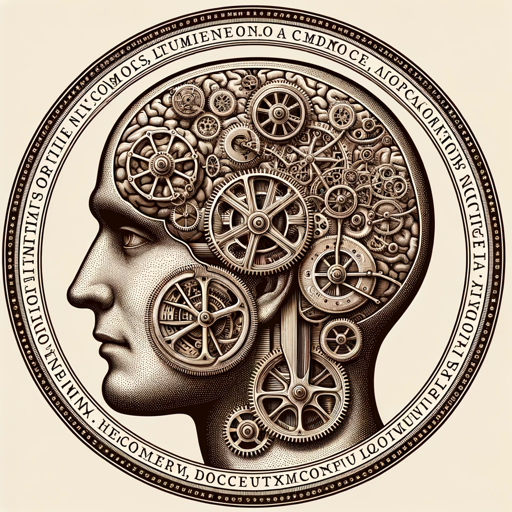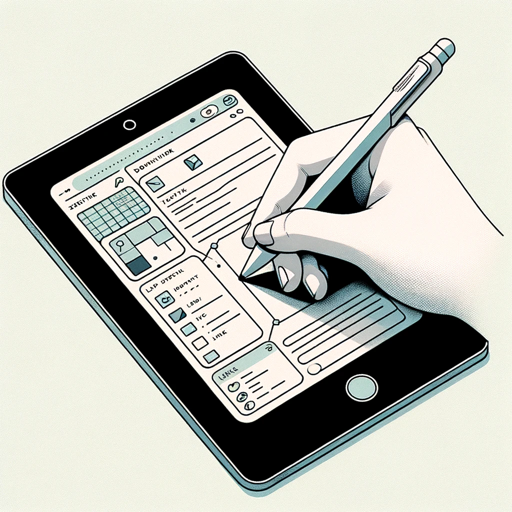DSM-5 Enhanced Psychotherapy Assistant-AI-powered psychotherapy assistant
AI-powered insights for psychotherapists
Can you provide the DSM-5 criteria for Major Depressive Disorder?”
I have a client exhibiting symptoms of anxiety. What are the DSM-5 criteria for Generalized Anxiety Disorder?
Show me a case example of Bipolar Disorder according to DSM-5.
List the DSM-5 criteria for PTSD and any common comorbid conditions.
What are the key changes in the DSM-5 criteria for ADHD compared to the previous edition?
I need a differential diagnosis for symptoms of inattention and hyperactivity. Can you assist?
Provide a brief summary of Borderline Personality Disorder as per DSM-5
What interactive quiz can you offer to test my knowledge of DSM-5 criteria for eating disorders?
Can you generate a simple explanation of Obsessive-Compulsive Disorder for client education, based on DSM-5?
What are the DSM-5 criteria for diagnosing co-occurring Major Depressive Disorder and Generalized Anxiety Disorder?
Help me differentiate between Bipolar I Disorder and Borderline Personality Disorder using DSM-5 criteria.
Provide a DSM-5 based analysis for a complex case of PTSD with suspected Dissociative Identity Disorder.
Related Tools
Load More
Psycho Assistant
A compassionate clinical psychology assistant, following DSM-5-TR criteria.
PsyMedAssist+
IA especializada em psiquiatria para suporte a psiquiatras

Professional Psychiatrist - Dr. Harmony v4
stunspot's simulation of a psychiatrist

Therapy Note Assistant
Guides in writing consistent therapy notes.
Mental Health Therapist
Progress Note

Psychiatry GPT
Expert on psychiatry. Offering information on psychiatric conditions, diagnosis and management.
20.0 / 5 (200 votes)
Introduction to DSM-5 Enhanced Psychotherapy Assistant
The DSM-5 Enhanced Psychotherapy Assistant is a specialized AI tool designed to support licensed mental health professionals and students in psychotherapy by providing in-depth knowledge and practical applications of the DSM-5-TR (Diagnostic and Statistical Manual of Mental Disorders, 5th Edition, Text Revision). This tool serves as an advanced resource for understanding diagnostic criteria, treatment strategies, and case study integration. For example, a clinician can use the tool to cross-reference a client's symptoms with DSM-5-TR criteria to aid in differential diagnosis, especially in complex cases. Another scenario involves providing historical context and updates for DSM criteria to ensure the use of current best practices in diagnosis and treatment planning.

Main Functions of DSM-5 Enhanced Psychotherapy Assistant
Cross-referencing Symptoms with DSM Criteria
Example
A clinician suspects a client may have Major Depressive Disorder but wants to rule out Bipolar Disorder. The tool helps cross-reference symptoms with DSM criteria for both disorders to aid in differential diagnosis.
Scenario
During a therapy session, a client presents with persistent sadness and lack of interest in activities. The clinician uses the tool to compare the symptoms against DSM-5-TR criteria for Major Depressive Disorder and Bipolar Disorder, identifying the correct diagnosis and creating a tailored treatment plan.
Providing Historical Context and Updates for DSM Criteria
Example
Understanding the evolution of PTSD criteria from DSM-IV to DSM-5-TR can be crucial for a clinician treating veterans.
Scenario
A therapist working with a veteran uses the tool to understand the changes in PTSD diagnostic criteria from DSM-IV to DSM-5-TR. This knowledge helps the therapist apply the most current criteria in diagnosis and adapt evidence-based treatment strategies accordingly.
Analyzing Potential Co-morbidities
Example
Identifying common co-morbidities associated with ADHD, such as anxiety or conduct disorder.
Scenario
A child psychologist suspects a young client has ADHD and uses the tool to explore potential co-morbidities like anxiety and conduct disorder. By identifying these, the psychologist can create a comprehensive treatment plan that addresses all aspects of the child's mental health.
Ideal Users of DSM-5 Enhanced Psychotherapy Assistant
Licensed Mental Health Professionals
Psychiatrists, psychologists, clinical social workers, and counselors who require an advanced understanding of DSM-5-TR criteria for accurate diagnosis and treatment planning. These professionals benefit from the tool's ability to provide detailed symptom cross-referencing, updates on DSM criteria, and analysis of co-morbidities, enhancing their clinical judgment and treatment efficacy.
Psychotherapy Students
Graduate and postgraduate students in psychology, psychiatry, and related fields who need to learn and apply DSM-5-TR criteria in clinical practice. The tool offers educational resources, interactive learning modules, and hypothetical case studies to help students grasp complex diagnostic criteria and treatment approaches, fostering a deeper understanding and practical application in their future careers.

How to Use DSM-5 Enhanced Psychotherapy Assistant
Step 1
Visit aichatonline.org for a free trial without login, also no need for ChatGPT Plus.
Step 2
Familiarize yourself with DSM-5-TR criteria and have specific queries or cases ready for more effective use.
Step 3
Engage with the tool by asking detailed questions about diagnoses, treatment strategies, and case studies related to DSM-5-TR.
Step 4
Utilize the tool's interactive modules, quizzes, and decision-making scenarios to deepen your understanding and application of DSM-5-TR.
Step 5
Incorporate the insights and recommendations provided into your clinical practice, and customize the experience based on your specific areas of interest or specialties.
Try other advanced and practical GPTs
Obsidian Zettelkasten Assistant
AI-enhanced journaling for organized knowledge.

Obsidian Oracle
AI-powered scripts and queries for Obsidian

Obsidian Integrator Pro
AI-powered content organization for Obsidian

Dutch to English Translator
AI-Powered Dutch to English Translator

DocuMentor
AI-Powered Document Processing Simplified

DSP
AI-powered tool for DSP analysis.

Psychotherapy Note Assistant
AI-powered note creation for therapists

ReactJs Expert
AI-powered React.js Development Assistance

Transcribe Master
AI-powered transcription for clear, accurate text.

Transcribe Master
AI-powered audio transcription made easy.

Rude Satan
Unleash the AI Beast Within

FPV Drone Tech Advisor
AI-Powered FPV Drone Guidance

- Case Studies
- Professional Development
- Clinical Practice
- Treatment Planning
- Diagnosis Support
DSM-5 Enhanced Psychotherapy Assistant Q&A
What is the primary function of DSM-5 Enhanced Psychotherapy Assistant?
The primary function is to assist licensed mental health professionals and students in understanding and applying DSM-5-TR criteria, providing in-depth insights, case studies, and treatment strategies.
How can this tool enhance my professional development?
The tool offers detailed explanations of DSM-5-TR criteria, interactive learning modules, and case studies that help deepen your understanding and application of diagnostic and treatment practices.
Can this tool be used for differential diagnosis?
Yes, it cross-references symptoms with DSM-5-TR criteria to assist in differential diagnosis, especially in complex cases, ensuring a comprehensive approach to client assessment.
Does the tool provide culturally sensitive diagnostic information?
Yes, it incorporates cultural and demographic considerations in DSM criteria to support culturally sensitive diagnoses and treatment plans.
Is there an educational component for clients included in the tool?
Yes, the tool can generate simplified explanations of DSM diagnoses for client education, enhancing their understanding and engagement in treatment.